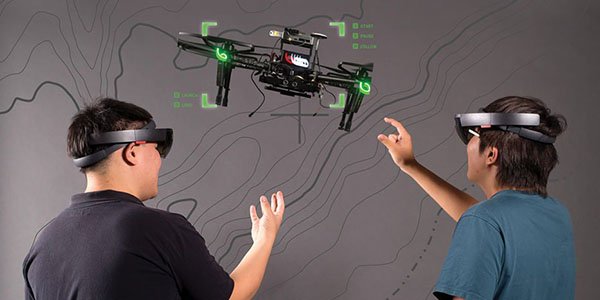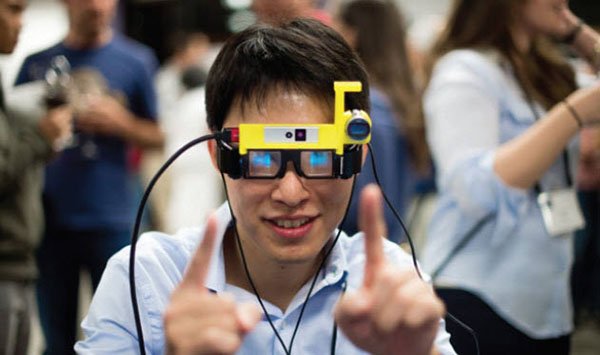Go to VR Lab at the University of California to understand what VR is for
10 years ago, Dr. Allen Yang had not read an academic report related to AR and VR because he could not find it. At the time, we could only see AR and VR in Hollywood movies, such as Star Trek, Iron Man, and Star Wars. By 2012, the situation had completely changed. Google Glass launched and Oculus Rift raised funds at Kickstarter.

Now Alan Young works at the University of California, Berkeley. He has two AR/VR projects on hand and aims to get ungraded students to study the technology. Allen Young and his colleagues set up the VR Lab with only five members when they opened up and more than 200 people two years later.
There are more and more people, indicating that technology has great potential. Yang said in an interview that each year, the University of California, Berkeley will open schools on Cal Day Open Day, and there are many people visiting the VR Lab.

About a year ago, VR company Immerex wanted to bring VR technology to film companies. It found Berkeley to seek cooperation. Finally, Immerex donated money to set up a fund to support Berkeley's VR/AR project.

The overall goal of the project is to use VR technology at the Berkeley campus, such as in the medical field, open source AR projects, or to use VR as a new way of controlling robots and communicating with robots.
21st Century Computer Laboratory
At Berkeley, some disciplines have started teaching with AR/VR. For example, art history classes use VR to teach art classes, and an architecture professor uses VR to teach students to design buildings. It is a pity that all equipment will be transported to the classroom and teach different courses. It will be a bit troublesome to move.
How to do? Researchers used Immerex funds to build a VR classroom for teachers. 20 students can sit in the classroom. The main VR classroom is surrounded by partitioned rooms where students can develop their own VR/AR projects. Berkeley’s goal is to create a 21st century computer lab that will make it easier for students to get in touch with VR/AR.
Alan Young and his students are looking for ways to apply VR/AR technology to other disciplines. They want to help medical students learn medicine using 3D technology. Medical imitations are expensive and can only be used once. They want to use AR/VR virtual products instead. Virtual products can be reprogrammed and used for many purposes. They also want to use AR/AR. Technology simulates surgical complications.
The filmmakers told them that it was difficult to use VR technology in the production process, so the researchers looked for ways to develop new movie languages. The movie is linear, with only one perspective. With VR technology, users can watch around and watch it at any time. Filmmakers cannot control the experience.
robot
Boston Dynamics is a robotics company that released hundreds of videos showing the robot's capabilities you may have seen. The Boston Dynamics robot loses its balance and adjusts itself to restore balance. Alan Young pointed out that robots are indeed amazing, but people and robots lack real communication.

Alan Young thought: "If there is a robot there, no matter scary or scary, you look at it, but you don't know what the robot is going to do, you don't know what it can do, you don't know what its task list is, or even Know how much power is still available."
Look at how humans communicate. When we meet someone for the first time, you will judge his intention through facial reactions. Soon you will know whether he is exhausted, whether he is sad or angry. Robots can't do it. Through ISAACS (Immersive Semi-Autonomous Area Command System), we can understand the robot's intentions.
The system uses an AR helmet, such as the Microsoft HoloLens. The helmet tells you what the robot's task is and what it's going to do next. A glance at the robot can tell what it is about. The second important part of ISAACS is control. Alan Young believes that the current robot and drone control technologies are similar to those of the 60s. How do we do? We need a better understanding of the method. Just like the graphical interface and touch interface, we need to develop better communication technologies.
Alan Young said: "There is no graphical and intuitive interface to control the robot." To teach parents, grandparents, and ordinary people to control robots, there is no easy way to find it. He also said: "In essence, robots need to coexist with people in the same space, and there is a big obstacle in the middle."
ISAACS is not yet very advanced. It is mainly not safe. It makes people understand that robots are the same thing. It is another matter for robots to understand people. Because of this, the blade of a drone will not harm humans.
Open Ark is an open source AR platform that the lab is developing. Berkeley University likes open source projects. In the 1970s, Unix was open source, and the latest deep learning was open source.
Alan Young pointed out: "What we want is a truly open source research project. We provide you with source code, source code for other universities, and source code for companies." For now, companies are AR/VR. Behind the scenes of technological development, Alan Young believes that open source is crucial to the advancement of technology at the academic level and can also enhance understanding.
With Open Ark technology, Berkeley researchers can provide an AR experience with a single device, without the need for a tracker, and no need for pointers. Although users need to sit at the desk while experiencing AR, the enhanced area is also limited, but later this year, students hope that the final product can enhance mobility.
Revolutionizing health care
Alan Young said that there is a problem with health care. The best doctors and hospitals are mainly concentrated in metropolitan areas. He also said: "The United States is imbalanced and the developing countries are not balanced. There is a way to solve this problem. It can also reduce health care costs and provide better services. That is telemedicine."

With AR and VR technology, telemedicine can be made easier. Doctors in San Francisco can see patients in Des Moines. In the future, if medical resources and patient information are placed in two different places, we can easily integrate them for analysis.
Alan Young pointed out that dentists can play music while distracting patients, distracting the patient's attention, and some dentists use helmets to show movies to patients, but also to distract attention. If the dentist can use VR technology to immerse the user in another world and distract the patient so that they no longer pay attention to the pain caused by the root canal, what will happen?
This fall, Berkeley will open new VR courses, so VR classrooms and upgraded VR labs must be ready by summer. Future schools will also establish a second VR lab named after Immerex. The laboratory is completely transparent with a glass wall, and students can see what's going on while walking by.
Alan Young said: "We also want to inspire the future."
Glass Metal Sealed Cap
Glass Metal Sealed Cap
YANGZHOU POSITIONING TECH CO., LTD. , https://www.pst-thyristor.com